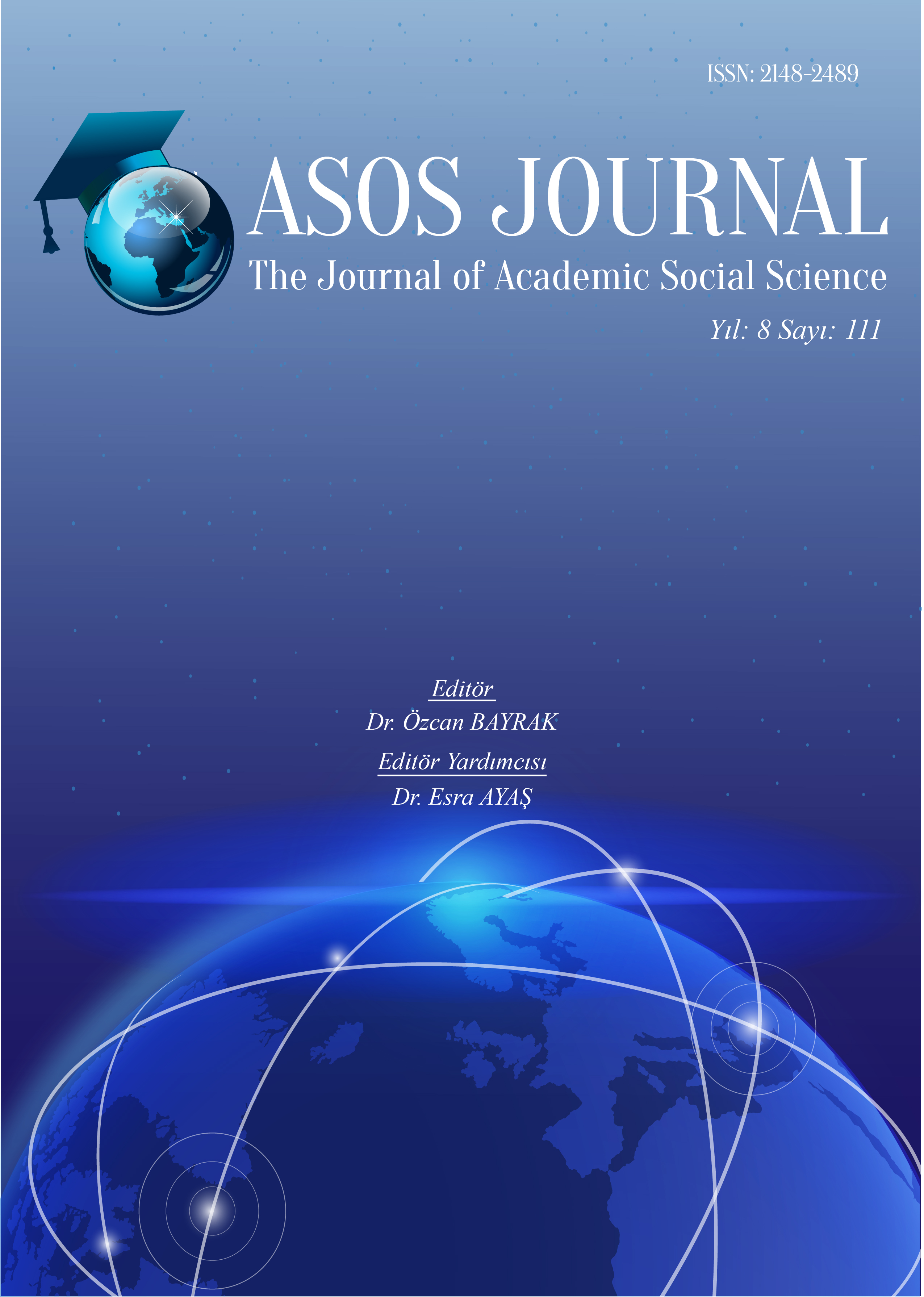Author :
Abstract
Osmanlı yargı sisteminin işleyişinin ortaya çıkarılmasında en önemli arşiv kaynaklarından biri Şer’iyye Sicilleridir. Yargı sisteminin en önemli temsilcisi durumunda olan kadılar tarafından tutulan bu defterler ait oldukları yerlerde alım-satım, borç verme, vekil tayini, bağış, rehin, evlilik, boşanma, vakıf kayıtları, gıda ve eşya fiyatlarını içermektedir. Bununla beraber beledi ve inzibati işler, devletin çıkardığı çeşitli yasaklar ile şehirlerde görülen salgın hastalıklar gibi konular da bu defterlere kaydedilirdi. Bu nedenle Şer’iyye Sicilleri, Osmanlı taşra teşkilatının idari, sosyal, kültürel, askeri ve iktisadi yapısının ortaya çıkarılmasında özel bir önemi vardır. Kaydedildikleri dönem ve yer hakkında önemli bilgiler ihtiva eden Şer’iyye Sicilleri, birinci elden kaynak olması sebebiyle, tarih araştırmacılığında başvurulan başlıca kaynaklar arasındadır. Bu çalışmada, H.1113-1114/M.1702-1703 tarihli 24 numaralı Amasya Şer’iyye Sicilinin tanıtımını yaparak, içerdiği belgelerin özetlerini vermeye çalıştık.
Keywords
Abstract
One of the most important archive sources in unveiling the functioning of judicial system of the Ottoman is the Şer’iyye Registers. These register books which are kept by the kadis, who are the most important representatives of the judicial system, contain purchase and sale, lending, proxy appointment, donation, pledge, marriage, divorce, foundation records, food and goods prices where they belong. In addition to this, municipal and disciplinary issues, various prohibitions imposed by the state and epidemic diseases encountered in cities were also recorded in these books. For this reason, Şer’iyye Registers have a special significance in revealing the administrative, social, cultural, military and economic structure of Ottoman rural organization. Şer’iyye Registers which have important information about the period and place they were registered, are among the main sources referenced in historical research, since they are the first-hand sources. In this study, we tried to introduce the Şer’iyye Register of Amasya numbered 24 and dated AH.1113-1114/CE.1702-1703 and give summaries of the documents contained there in.
Keywords
- Akgündüz, Ahmet, (1988), Şer‘iye Sicilleri, C.1, Türk Dünyası Araştırmaları Vakfı Yayınları, İstanbul.
- Aksın, Ahmet, (1999), 19. Yüzyılda Harput, Ceren Ofset ve Matbaacılık, Elazığ.
- Atalar, Münir, (1980), “Şer’iyye Mahkemelerine Dâir Kısa Bir Târihçe”, İslam İlimleri Enstitüsü Dergisi, S.4, Ankara, s.303-328.
- Çelik, Kürşat, (2013), “256 Numaralı 1236 H. (1820-1822 M.) Tarihli Manisa Şer’iyye Sicilinin Tanıtımı ve Fihristi”, Fırat Üniversitesi Sosyal Bilimler Dergisi, C.24, S.1, Elazığ, s.255-267.
- Demir, Alpaslan, ve Dönder, Yasin, (2015), “Amasya Tarihine Işık Tutacak Yeni Bir Şer’iyye Sicili”, III. Uluslararası Geçmişten Günümüze Merzifon ve Amasya Yöresi Sempozyumu (8-10 Ekim 2015) Bildiri Kitabı, Edge Akademi Yayınevi, Ankara, s.7683.
- Özdemir, Rifat, (1986), “Şer’iyye Sicillerinin Sosyo-Ekonomik Tarih ve Halk Kültürü Açısından Önemi”, I. Battalgazi ve Malatya Çevresi Halk Kültürü Sempozyumu Tebliğler Kitabı, Malatya, s.179-187.
- Tak, Ekrem, (2009), Diplomatik Bilimi Bakımından XVI-XVII. Yüzyıl Kadı Sicilleri ve Bu Sicillerin İhtiva Ettiği Belge Türlerinin Form Özellikleri ve Gelişimi, Marmara Üniversitesi Türkiyat Araştırmaları Enstitüsü, Basılmamış Doktora Tezi, İstanbul.
- Uzunçarşılı, İsmail Hakkı, (2014), Osmanlı Devleti’nin İlmiye Teşkilatı, Türk Tarih Kurumu Yayınları, Ankara.
- Yılmaz, Fikret, (1987), Amasya’nın Bir Numaralı Şer’iyye Sicili, Ege Üniversitesi Sosyal Bilimler Enstitüsü, Basılmamış Yüksek Lisans Tezi, İzmir.





